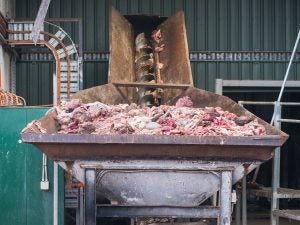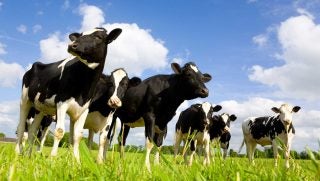When you think of livestock farming, you probably think of meat. Maybe leather or textiles like wool, feather pillows, and footballs? But think about all the other parts of the animal. Nothing goes to waste, and farmers and ranchers really are the ultimate recyclers!
Besides the obvious, what happens to the other parts of the animal? That’s where animal rendering comes in. But what, you may ask, is animal rendering?
One part of utilizing animals for food is that you are bound to have parts that are unsuitable for traditional food products. Some of these parts may include edible but undesirable aspects like certain organs, meat on the legs or close to bones, excess fat, while other parts may be inedible in their current condition. Instead of simply tossing this enormous amount of livestock parts into a landfill, they are sent to a rendering plant. The organization that oversees this is called the North American Renderers Association.
How animal rendering is done
According to the U.S. Department of Agriculture, the definition of rendering is “an off-site process that uses heat to convert animal carcasses into safe, pathogen-free feed protein and other valuable end products while reducing the negative effects of the carcasses on people and the environment.”
The process includes, but is not limited to, cooking and drying of meat and other animal and food byproducts to recover the fats and proteins. The products of rendering are used in a wide variety of everyday items, such as soaps, paints, varnishes, lubricants, caulk, candles, cleaners, paints, polishes, rubber products, plastics, fertilizers, explosives, and so much more! This TED talk titled How Pig Parts Make the World Turn further explains some of this.
In addition to the many products for people, we can also utilize the fats and proteins to improve the nutrition of human and animal feeds.
Unused products like organ meats are full of vitamins and minerals that animals need to maintain their health and nutrition. We can utilize these products in feed for livestock, poultry, and fish in addition to domestic animals like cats and dogs.
High cooking temperatures used in the rendering process prevent the spread of bacteria, viruses, and other safety hazards that could be presented from using certain parts of the body.

Since products of rendering could be used as ingredients in edible products it’s important to ensure high safety and quality standards. Hazard analysis are conducted routinely to make sure the current good manufacturing practices are still suitable. The Association of American Feed Control Officials oversees regulations from rendering into pet food safety and their website is a great resource.
Sustainability of animal rendering
There are roughly 300 rendering plants in the U.S., and they account for about $10 billion in annual economic activity. These plants prevent 56 billion pounds of raw materials from entering landfills each year. Without the rendering process, data show that all landfills in the United States would be filled over capacity in less than four years.
Not only does rendering prevent public health hazards it also prevents a significant amount of greenhouse gases from entering the atmosphere. The North American Rendering Association states that “Upcycling of Animal by-products sequesters at least five times as many greenhouse gas emissions as it emits.” This process increases the sustainability of livestock operations and the food industry as a whole.
Rendering isn’t just for raw materials from processing plants, it’s also an important resource for food establishments. Americans love their fried food, and this requires a significant amount of oil to be used in restaurants. Rendering plants recycle more than 1.6 billion pounds of used cooking oil into animal feed, biodiesel, and renewable diesel.
According to the North American Renderers Association, rendering generates about 22 billion pounds of animal fats, oils, and proteins each year to be utilized in other products. It really is the ultimate sustainability story on how nothing from livestock goes to waste.
Another point to be made is that all livestock emissions account for 4 percent of U.S. greenhouse gas emissions, according to the EPA, and no part of an animal goes to waste. Well, that 4 percent sure does a lot for us, wouldn’t you agree?
Michelle Miller, the Farm Babe, is a farmer, public speaker and writer who has worked for years with row crops, beef cattle, and sheep. She believes education is key in bridging the gap between farmers and consumers.



